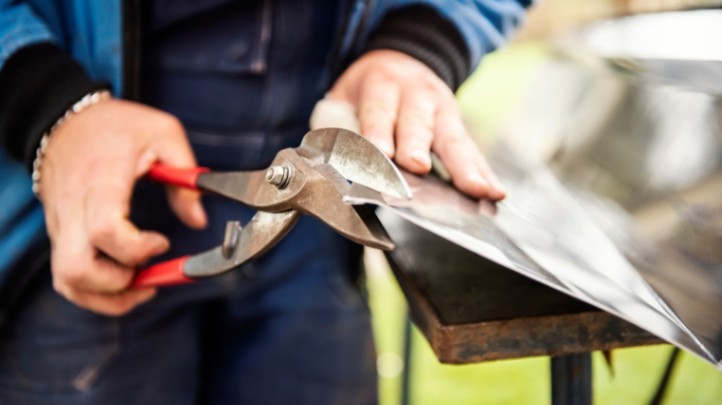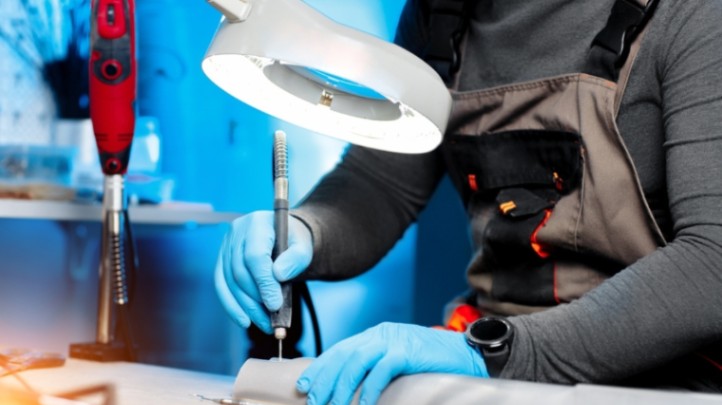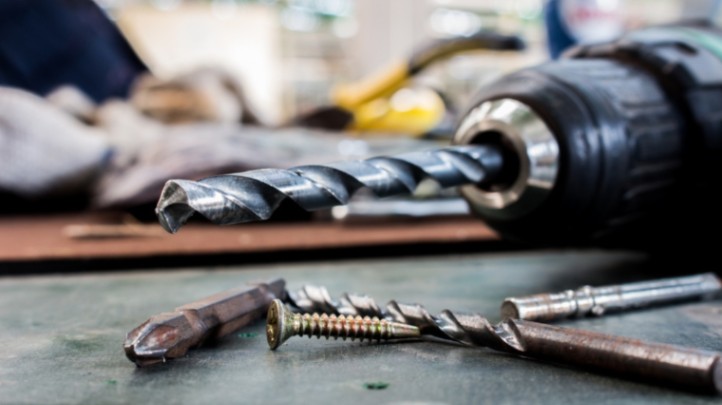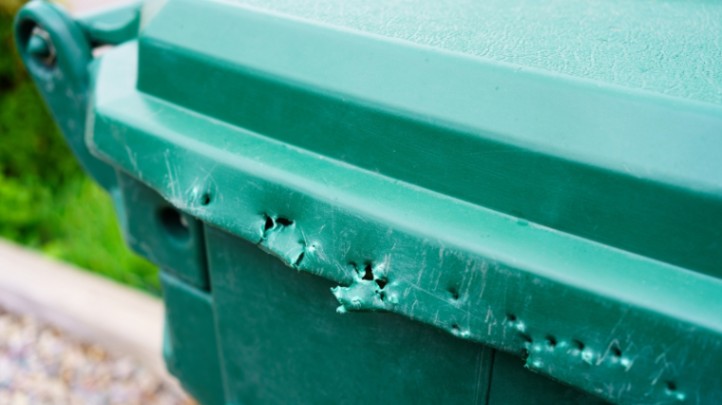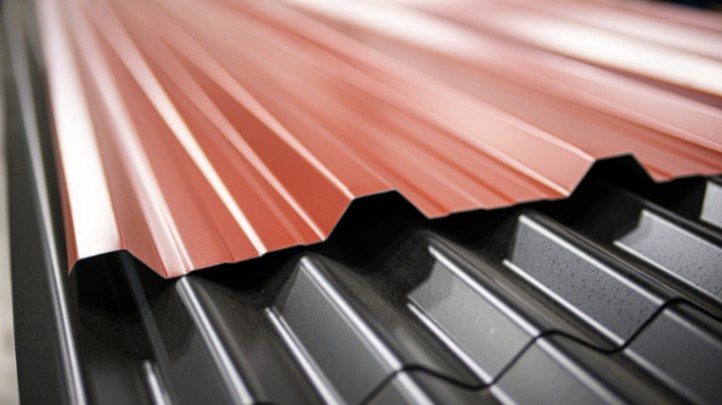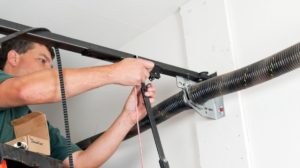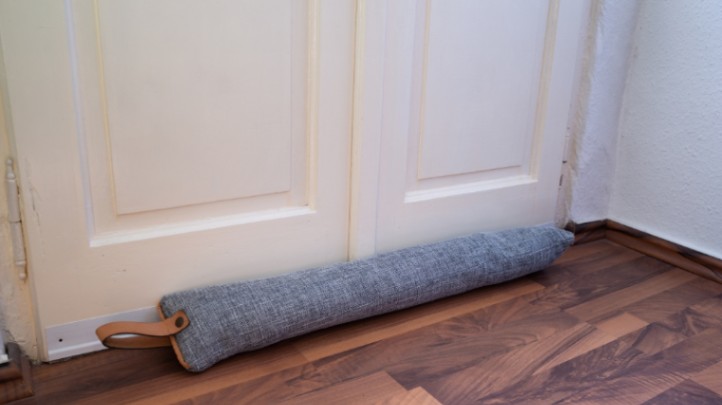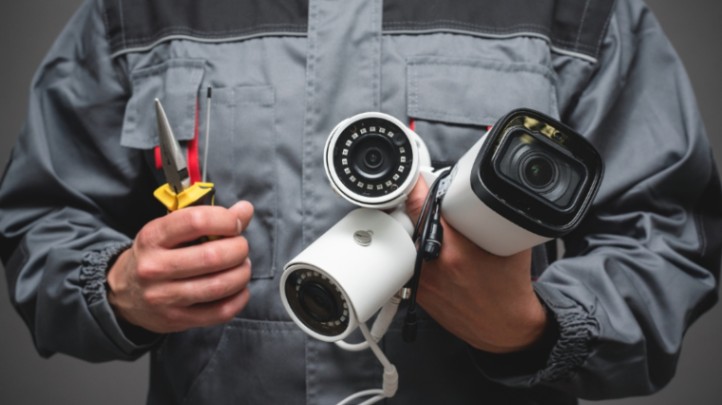Our kettle is an essential part of our daily routine for many of us. Whether for a morning cup of tea or a midday coffee break, the kettle is often the go-to appliance for hot water. However, when a kettle boils dry, it can cause many problems that may affect its performance and pose potential health hazards. Acquiring how to clean a kettle that has boiled dry is advantageous.
In this article, we’ll explore the importance of cleaning a kettle that has boiled dry and provide a step-by-step guide to help you effectively clean your kettle. We’ll also discuss alternative cleaning methods, preventative measures to avoid future boiling dry incidents, and troubleshooting common issues.
By the end of this article, you’ll better understand why it’s essential to clean your kettle regularly and how to maintain it properly to ensure its longevity and safety. So, let’s dive in and get started!

1: Introduction
Kettles are one of the most commonly used appliances in many households. They are used to boil water quickly and easily, which makes them ideal for making tea, coffee, and other hot beverages. However, problems can occur that can impact the kettle’s performance and even pose potential health hazards. In this article, we will explore the three main problems that can occur when using a kettle – boiling it dry, poor performance due to damage, and using a dirty kettle.
2: Understanding the Problem
Kettles are one of the most commonly used appliances in many households. They are used to boil water quickly and easily, which makes them ideal for making tea, coffee, and other hot beverages. However, problems can impact the kettle’s performance and pose potential health hazards. In this article, we will explore the three main issues that can occur when using a kettle – boiling it dry, poor performance due to damage, and using a dirty kettle.
3: What Happens When a Kettle Boils Dry?
I. What is a dry boil?
A dry boil occurs when a kettle is heated without water. This can happen accidentally if the kettle is left on the stove too long or deliberately if someone is attempting to clean the kettle. A dry boil can cause severe damage to the kettle and can even pose a fire risk.
II. How does a dry boil affect the kettle?
When a kettle boils dry, the heating element is exposed to the air, which can cause it to burn out. This means that the kettle will no longer work and need to be replaced. In addition, the heat generated by the heating element can cause the kettle to warp or discolor, affecting its appearance and making it difficult to clean.
III. How it Affects the Kettle’s Performance
In addition to the damage caused by boiling a kettle dry, other problems can impact a kettle’s performance.
IV. Burnt-out heating elements
If a kettle’s heating element burns out after boiling it dry, it will no longer work. This means the user must replace the kettle, which can be costly.
V. Discoloration and warping
Suppose a kettle is subjected to high heat. In that case, it can warp or discolor, affecting its appearance and making it difficult to clean. Discoloration and warping can impact the overall performance of the kettle, as it may not heat up as efficiently as before.
VI. Unpleasant odors and tastes
A kettle can develop unpleasant odors and tastes if it is not cleaned regularly. Unpleasant smells and preferences can be due to the build-up of limescale or bacteria, both of which can impact the taste of the water and the quality of the beverages made with it.
4: The Potential Health Hazards of Using a Dirty Kettle
In addition to poor performance, a dirty kettle can pose potential health hazards.
I. The build-up of limescale and bacteria
If a kettle is not cleaned regularly, limescale can build up on the heating element and the kettle’s interior. Limescale is a hard, chalky deposit formed when hard water is boiled. It can affect the taste of the water and make it cloudy. Limescale can also cause the heating element to work harder, leading to damage and a shorter lifespan for the kettle.
Bacteria can also grow in a dirty kettle, especially if it is not dried properly after each use. Bacteria thrive in warm and moist environments, which can be found inside a kettle that is not cleaned regularly. This can risk the user’s health, as bacteria can cause stomach flu, diarrhea, and vomiting.
II. The risk of poisoning
If a kettle is not cleaned correctly, it can also pose a risk of poisoning. This can occur if some toxic chemicals or substances have been left behind in the kettle. These can be harmful if they come into contact with the water boiled in the kettle.
5: Materials Needed for Cleaning
To clean your kettle correctly, you will need the following materials:
- White vinegar
- Water
- Soft cloth or sponge
- Baking soda (optional)
- Lemon (optional)
I. Safe Cleaning Products to Use
White vinegar is an excellent cleaning agent that can help remove limescale and bacteria from your kettle. It is safe and will not leave harmful chemicals or residues in your kettle.
Baking soda is another safe and effective cleaning product that can remove limescale and stains from your kettle. It is a mild abrasive that can help scrub away dirt and grime without damaging the surface of your kettle.
Lemon is a natural cleaning product that can help remove stains and freshen your kettle. It contains citric acid, which can help dissolve limescale and other mineral deposits.
II. Precautions to Take When Cleaning a Kettle
When cleaning your kettle, there are a few precautions you should take to ensure your safety:
- Always unplug the kettle and let it cool down before cleaning it.
- Never immerse the kettle in water or any other liquid.
- Be careful when handling hot water or steam.
- Use a soft cloth or sponge to clean the kettle, and avoid using abrasive materials that can scratch the surface.
- Rinse the kettle thoroughly with water after cleaning to remove any cleaning products or residues.
Following these precautions and using safe cleaning products, you can keep your kettle clean and free from limescale, bacteria, and other harmful substances.
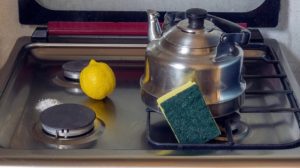
6: A Step-by-Step Guide to Cleaning a Boiled-Dry Kettle
Cleaning your kettle can be a simple and easy process if you follow these step-by-step instructions:
Step I: Prepare the Kettle for Cleaning
Before cleaning your kettle, ensure it is unplugged and cooled down.
Mix a solution of equal parts white vinegar and water. Fill the kettle with this solution, covering the heating element. Let it sit for about an hour to loosen limescale or mineral deposits.
Add a tablespoon of baking soda to the solution if your kettle has stubborn stains. Alternatively, you can use lemon juice instead of vinegar to help remove stains and freshen up the kettle.
Step II: Cleaning the Inside of the Kettle
After soaking the vinegar solution for an hour, use a soft cloth or sponge to scrub the kettle’s interior. Pay special attention to areas with heavy limescale buildup.
If the limescale is particularly stubborn, you can repeat the process or use a toothbrush to scrub the affected areas.
Step III: Cleaning the Outside of the Kettle
Once the inside of the kettle is clean, use a soft cloth or sponge to clean the exterior of the kettle. Pay attention to any areas with stains or dirt buildup.
Avoid using abrasive materials that can scratch the surface of the kettle. If necessary, you can use a solution of mild dish soap and water to clean the outside of the kettle.
Step IV: Rinse and Dry the Kettle
After cleaning, rinse the kettle thoroughly with water to remove any cleaning products or residues.
Wipe the kettle dry with a clean towel or let it air dry. Be sure to dry the interior and exterior of the kettle thoroughly to prevent the growth of bacteria.
Step V: Finishing Touches
Once your kettle is clean and dry, you can add a finishing touch to freshen it up.
You can use a slice of lemon or a few drops of essential oil to add a pleasant scent to the kettle. Add the lemon or oil to a cup of water and boil it in the kettle for a few minutes.
Following these simple steps, you can keep your kettle clean, fresh, and functioning correctly.
7: Alternative Methods of Cleaning a Kettle
If you don’t want to use vinegar or lemon juice to clean your kettle, you can try other alternative methods. Here are some natural and commercial cleaning options, as well as specialized cleaning tools:
I. Natural Cleaning Methods
- Baking Soda: Mix baking soda with water to create a paste. Apply the paste to the affected areas of the kettle and let it sit for about 30 minutes. Scrub the kettle’s interior with a soft cloth or sponge, then rinse and dry.
- Citric Acid: Mix a solution of citric acid and water. Add the solution to the kettle and let it sit for about an hour. Scrub the kettle’s interior with a soft cloth or sponge, then rinse and dry.
- Salt and Vinegar: Mix salt and vinegar to create a paste. Apply the paste to the affected areas of the kettle and let it sit for about 30 minutes. Scrub the kettle’s interior with a soft cloth or sponge, then rinse and dry.

II. Commercial Cleaning Products
- Kettle Descaler Balls: Descalers are commercial cleaning products that remove limescale and mineral deposits from kettles. They are liquid or powder, and you can find them at most home improvement or hardware stores.
- Multi-Purpose Cleaners: Multi-purpose cleaners are also effective at cleaning kettles. Look for cleansers that are safe for use on stainless steel or plastic surfaces.

III. Specialized Cleaning Tools
- Kettle Descaler Balls: Descaler balls are specialized cleaning tools designed to remove limescale buildup in kettles. Add the ball to the kettle and boil it for about 30 minutes. The ball will release citric acid, which helps dissolve limescale and mineral deposits.
- Kettle Cleaning Brushes: Kettle cleaning brushes are specialized brushes designed to clean the interior of kettles. They are available in different sizes and shapes to fit different types of kettles.
No matter which cleaning method or product you choose, read the instructions carefully and take any necessary precautions to ensure your safety and the proper functioning of your kettle.
8: Preventing Future Boiling Dry Incidents
Preventing your kettle from boiling dry is crucial for both your kettle’s longevity and safety. Here are some tips on how to avoid a kettle from burning dry, how to tell when a kettle is boiling dry, and proper kettle usage and maintenance:
I. Tips for Preventing a Kettle from Boiling Dry
- Always ensure enough water is in the kettle before turning it on.
- Use a kettle with an automatic shut-off feature. This feature will turn off the kettle when the water reaches boiling point.
- Keep an eye on the kettle while it is heating. Never leave the kettle unattended while it is boiling.
- Avoid overfilling the kettle with water. Overfilling can cause the water to spill over and potentially damage the kettle.
- Clean your kettle regularly to prevent mineral buildup and other performance issues.
II. How to Tell When a Kettle is Boiling Dry
- The kettle will start hissing or rattling as the water boils away.
- You will start to see steam coming out of the kettle’s spout.
- The kettle’s heating element may become damaged due to the lack of water.
- The kettle may emit an unpleasant smell.
III. Proper Kettle Usage and Maintenance
- Always use your kettle according to the manufacturer’s instructions.
- Refrain from immersing your kettle in water. This can cause the kettle to short-circuit and become dangerous.
- Avoid using harsh cleaning agents, abrasive sponges, or steel wool to clean your kettle. These can damage the kettle’s surface.
- Regularly clean your kettle using natural or commercial cleaning products to prevent mineral buildup and other issues.
By following these tips and adequately maintaining your kettle, you can prevent future boiling dry incidents and ensure that your kettle lasts many years.
9: Troubleshooting Common Issues
Even with proper maintenance, kettles can sometimes experience issues. Here are some common problems and how to troubleshoot them:
I. Dealing with Stubborn Stains or Mineral Buildup
- Fill the kettle with equal parts of water and vinegar and let it soak for several hours or overnight. Then, use a soft sponge or cloth to scrub the inside of the kettle.
- You can use a descaling solution designed explicitly for kettles for stubborn mineral buildup. Follow the instructions on the product label.
- If you’re dealing with stains on the outside of the kettle, you can use a soft sponge or cloth and mild dish soap to clean it.
II. Restoring the Kettle’s Heating Element
- If the heating element malfunctions, try soaking the kettle in a descaling solution overnight. This can remove any mineral buildup that may be affecting the element.
- If the heating element is damaged, you may need to replace it. Contact the manufacturer or professional repair service for assistance.
III. Addressing Unusual Odors or Tastes
- If your kettle has an unusual odor or taste, try cleaning it with water and lemon juice. Let it soak for several hours before rinsing and drying.
- If the issue persists, it may be a sign that the kettle is old and needs to be replaced.
By troubleshooting these common issues, you can keep your kettle in good working condition and ensure that it continues to provide you with hot water for your beverages and cooking needs.
10: Frequently Asked Questions (FAQs)
I. How often should I clean my kettle?
It is recommended to clean your kettle once a month to prevent mineral buildup and ensure it continues functioning correctly.
II. Is it safe to use vinegar for cleaning a kettle?
Yes, vinegar is a safe and effective natural cleaning agent that can be used to clean a kettle. Just rinse the kettle thoroughly after cleaning to remove any vinegar residue.
III. What should I do if my kettle’s heating element is damaged?
If the heating element of your kettle is damaged, you may need to replace it. Contact the manufacturer or professional repair service for assistance. If your kettle is still under warranty, the manufacturer may be able to repair or replace it for you.
11: Conclusion
In conclusion, cleaning a kettle that has boiled dry is crucial for the proper functioning of the appliance and for ensuring your safety. Neglecting to clean a kettle can lead to mineral buildup, stains, and unusual odors or tastes in your hot beverages.
Following the step-by-step guide and tips in this article, you can easily clean your kettle using safe and effective methods. It’s also essential to take preventative measures to avoid future boiling dry incidents by monitoring the water level in the kettle and properly maintaining it.
Remember to clean your kettle at least once a month and follow the manufacturer’s instructions for proper usage and maintenance.
We hope this article has helped you understand the importance of cleaning a kettle that has boiled dry and provides the information and resources needed to clean and maintain your kettle correctly. Cheers to a good cup of tea or coffee!
